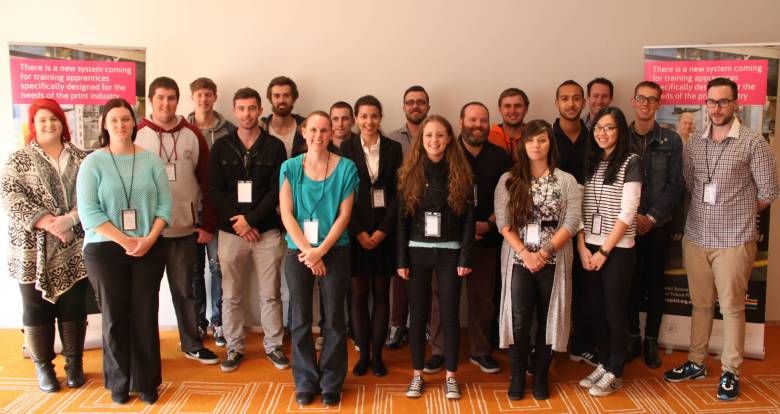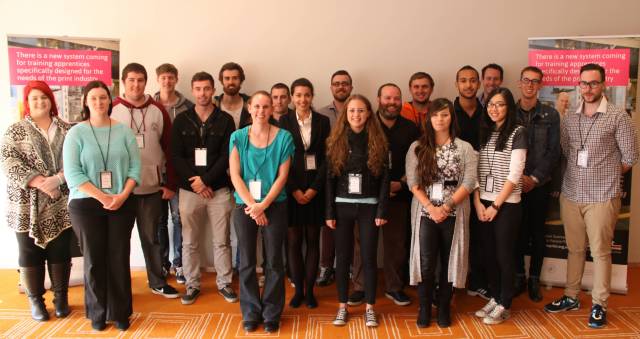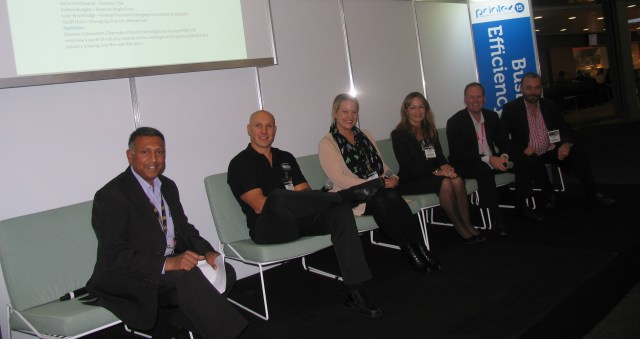
Latest results from the Future Print Apprentice Forum indicate the overall strategy of the initiative is sound, and paving the way to further develop the programme. The federally funded Future Print Apprenticeship Project with some 230 apprentices has now been running for nearly two years and will conclude at the end of 2015. Bill Healey, who heads up the joint venture initiative between Printing Industries and the AMWU, says the aim of the project has always been to design a sustainable form of vocational training for the industry and, with a new competency-based system now well into its pilot phase, it was time to see how it was working at the coalface.
Healey says, “We know that the print and graphic communication sector is experiencing unprecedented change, and that the pace of change is, if anything, likely to accelerate rather than stabilise. “The challenge for us as an industry is to continue to attract, inspire, train and mentor people to take their place in the industry, even as that change is happening all around us. “Clearly, promoting print and graphic communications as the dynamic and exciting industry that it is, is an area where we still have a long way to go, but we have already seen great improvements through the establishment of this project, which has run a number of communications and resources for employers and job seekers, via website resources, social media and direct contact with schools, businesses and other key stakeholders.” He says as young people are less willing to commit to a set of four-year traditional apprenticeship and both trainees and employers keen to explore alternatives to the off-site study blocks, which left businesses short-handed, the new training model was designed to be largely delivered on-site, making use of new technologies and an improved structure which partners RTOs with employers and supervisors to assess the achievement of set competencies on the go. Healey says, “What the feedback from our apprenticeship forum, held in Melbourne in April, tells us is that, by and large, we got it right. “The Future Print advisors, who provide support to both the apprentices and their employers, and the work we continue to do with RTOs and employer organisations to increase the level of support offered, was highlighted as being of key importance and while most apprentices are satisfied, it is probably an area where things need to improve even more.
“With mentors and supervisors identified as having a large influence over the apprentice’s perceived progress and their job satisfaction, the Future Print Mentoring Program we ran earlier – as well as the recently introduced Future Print Supervisor Training Courses – are clearly going to contribute positively to the ongoing success of industry training.” Healey says the most encouraging feedback from students was that they were keen to adopt digital and other new technologies to help meet what they believe is a growing, but changing, demand from clients. “The apprentices who were involved in the forum agreed that they could envisage a bright future ahead in the industry, and were keen to be part of it,” he says. “In fact, a number expressed their desire not only to progress in their trade, but to build a wider career in the industry, working both here and overseas, and ultimately to own their own business. “Although they fully recognised that they will need to be flexible in their approach, and be willing to adapt and add new skills as the industry continues to change, they showed a keen appreciation of the challenges ahead and a real enthusiasm for meeting them. And that, perhaps, is the most pleasing piece of feedback of all.”
Comment below to have your say on this story.
If you have a news story or tip-off, get in touch at editorial@sprinter.com.au.
Sign up to the Sprinter newsletter




